Fiat Panda vs Toyota Prius – Differences & prices compared
Compare performance, boot space, consumption and price in one view.
Find out now: which car is the better choice for you – Fiat Panda or Toyota Prius?
The Fiat Panda (Hatchback) comes with a Petrol MHEV engine and Manuel transmission. In comparison, the Toyota Prius (Hatchback) features a Plugin Hybrid engine with Automatic transmission.
When it comes to boot capacity, the Fiat Panda offers 225 L, while the Toyota Prius provides 284 L – depending on how much space you need. If you’re looking for more power, decide whether the 70 HP of the Fiat Panda or the 223 HP of the Toyota Prius suits your needs better.
In terms of consumption, the values are 5 L per 100 km for the Fiat Panda, and 0.50 L for the Toyota Prius.
Price-wise, the Fiat Panda starts at 14100 £, while the Toyota Prius is available from 39400 £. Compare all the details and find out which model fits your lifestyle best!
When comparing the Fiat Panda and the Toyota Prius, it's clear that both cars cater to distinct audiences with their unique strengths. The Panda shines with its compact size and versatility, making it an ideal choice for urban drivers seeking practicality. On the other hand, the Prius stands out with its impressive fuel efficiency and advanced hybrid technology, appealing to eco-conscious consumers looking for a reliable and sustainable vehicle.
Fiat Panda
The Fiat Panda is a compact city car that brilliantly combines practical design and efficient functionality. Its boxy shape provides ample interior space and visibility, making it a favourite among urban drivers. With its reputation for reliability and affordability, the Panda continues to be a top choice for those seeking a no-frills, dependable vehicle.
details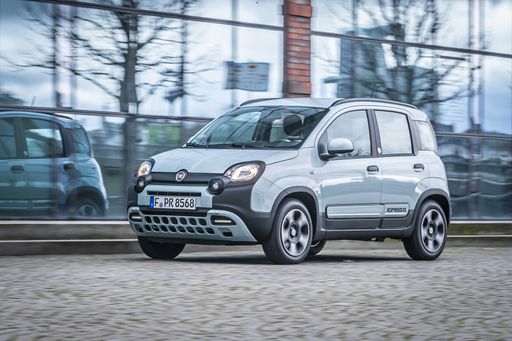 @ media.stellantis.com
@ media.stellantis.com
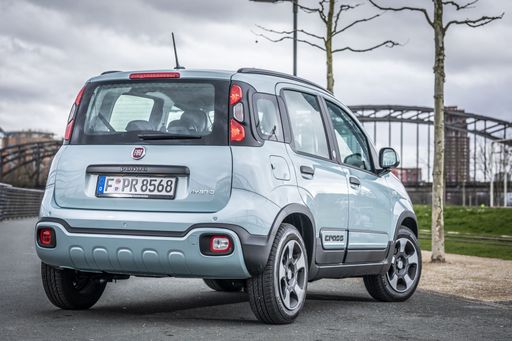 @ media.stellantis.com
@ media.stellantis.com
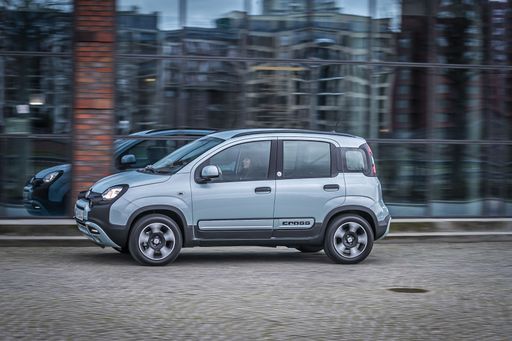 @ media.stellantis.com
@ media.stellantis.com
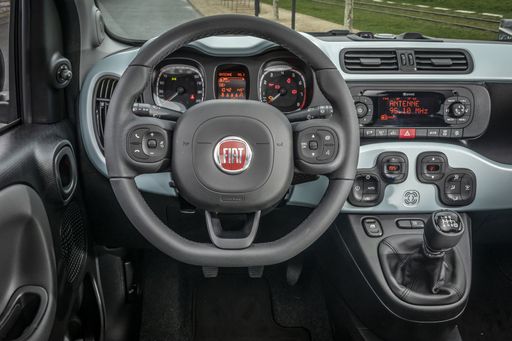 @ media.stellantis.com
@ media.stellantis.com
Toyota Prius
The Toyota Prius stands as a pioneer in the realm of hybrid vehicles, offering an eco-friendly driving alternative with its innovative technology. Its aerodynamic design and comfortable interior make it a practical choice for those looking to reduce their carbon footprint without sacrificing style. Additionally, the Prius boasts a reputation for reliability and efficiency, contributing to its lasting popularity among environmentally conscious drivers.
details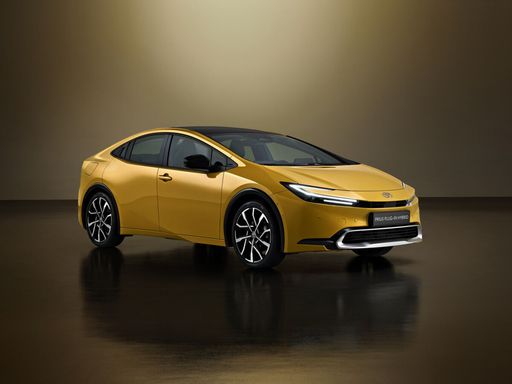 @ Toyota
@ Toyota
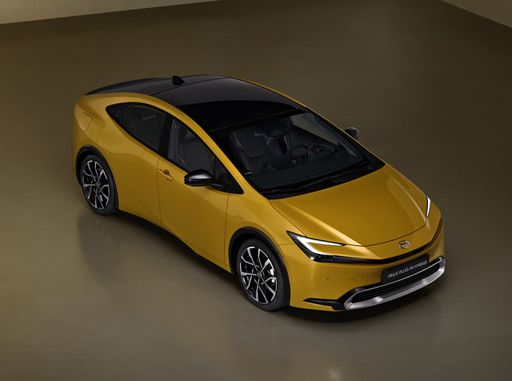 @ Toyota
@ Toyota
 @ Toyota
@ Toyota
 @ Toyota
@ Toyota
The automotive industry is witnessing a notable evolution in the small car segment, where practicality meets innovation. In this comparison, we will take a closer look at two popular models: the Fiat Panda and the Toyota Prius. Both vehicles embody distinct approaches to urban mobility, catering to different consumer needs while delivering efficiency and comfort. Let's dive into their technical aspects and innovations.
Design and Dimensions
The Fiat Panda stands out with its compact hatchback design measuring 3653 mm in length, 1643 mm in width, and 1551 mm in height. It is designed primarily to navigate the tight streets of urban environments with ease while providing a welcoming cabin for up to five passengers.
Conversely, the Toyota Prius, maintaining its identity as a hallmark of hybrid technology, boasts a larger footprint at 4599 mm long and 1782 mm wide, with a height of 1470 mm. This extra space translates to a more generous trunk capacity of 284 liters, making it more suitable for families or those requiring additional cargo space.
Engine Specifications
The Fiat Panda uses a petrol MHEV (Mild Hybrid Electric Vehicle) engine that is compact and efficient. With a power output of 70 HP from its 999 cm³ three-cylinder engine, the Panda strikes a balance between performance and fuel efficiency, consuming between 5 to 5.1 L/100 km. Its manual gearbox offers drivers engaging control over their driving experience, although the acceleration from 0 to 100 km/h ranges between 13.9 to 14.7 seconds, reflecting its focus on fuel thrift over aggressive driving.
On the other hand, the Toyota Prius is powered by a 2.0-liter four-cylinder engine that produces a robust 223 HP. This Plugin Hybrid system not only emphasizes power, allowing the Prius to achieve 0 to 100 km/h in just 6.8 seconds, but also efficiency with impressive consumption figures ranging from 0.5 to 0.7 L/100 km in hybrid mode. The continuously variable transmission (CVT) adds seamless power delivery, enhancing the driving experience.
Environmental Impact
When it comes to emissions, the Fiat Panda emits CO2 between 113 to 116 g/km, placing it in the C/D efficiency classes. While commendable for city cars, it does not hold a candle to the Prius’s performance in this arena.
The Toyota Prius is much more environmentally friendly, thanks to its advanced hybrid technology, which allows it to achieve CO2 emissions as low as 12 g/km. Its design incorporates sustainability, with a focus on reducing carbon footprint, making it a top choice for eco-conscious consumers.
Innovations and Technology
Innovation manifests differently between the two models. The Fiat Panda focuses on practicality and accessibility with features geared toward urban driving. Its lightweight design and compact size give it an advantage in maneuverability and ease of parking.
The Toyota Prius, however, leads in technological advancements. It offers an array of cutting-edge features including an advanced infotainment system, adaptive cruise control, and lane-keeping assist, securing its position as a leader in the hybrid segment. Most notably, the Prius's electric range of 86 km allows for short commutes purely on electric power, enhancing its appeal to those looking for a greener solution.
Conclusion: Which One to Choose?
Ultimately, the choice between the Fiat Panda and Toyota Prius boils down to individual needs. The Fiat Panda shines as an affordable, practical option for urban dwellers who prioritize size and simplicity. In contrast, the Toyota Prius appeals to those seeking advanced hybrid technology, robust performance, and superior fuel efficiency.
As the automotive market continues to evolve, both vehicles represent significant strides in their respective philosophies—be it minimalism in city driving or maximizing technological advancement in sustainable transportation.

|

|
|
|
|
Costs and Consumption |
|
|---|---|
|
Price
14100 £
|
Price
39400 - 45800 £
|
|
Consumption L/100km
5 L
|
Consumption L/100km
0.5 - 0.7 L
|
|
Consumption kWh/100km
-
|
Consumption kWh/100km
-
|
|
Electric Range
-
|
Electric Range
72 - 86 km
|
|
Battery Capacity
-
|
Battery Capacity
-
|
|
co2
113 g/km
|
co2
12 - 17 g/km
|
|
Fuel tank capacity
38 L
|
Fuel tank capacity
40 L
|
Dimensions and Body |
|
|---|---|
|
Body Type
Hatchback
|
Body Type
Hatchback
|
|
Seats
4
|
Seats
5
|
|
Doors
5
|
Doors
5
|
|
Curb weight
1055 kg
|
Curb weight
1620 - 1630 kg
|
|
Trunk capacity
225 L
|
Trunk capacity
284 L
|
|
Length
3635 mm
|
Length
4599 mm
|
|
Width
1643 mm
|
Width
1782 mm
|
|
Height
1551 mm
|
Height
1470 mm
|
|
Payload
365 kg
|
Payload
365 - 375 kg
|
Engine and Performance |
|
|---|---|
|
Engine Type
Petrol MHEV
|
Engine Type
Plugin Hybrid
|
|
Transmission
Manuel
|
Transmission
Automatic
|
|
Transmission Detail
Manual Gearbox
|
Transmission Detail
-
|
|
Drive Type
Front-Wheel Drive
|
Drive Type
Front-Wheel Drive
|
|
Power HP
70 HP
|
Power HP
223 HP
|
|
Acceleration 0-100km/h
13.90 s
|
Acceleration 0-100km/h
6.80 s
|
|
Max Speed
164 km/h
|
Max Speed
177 km/h
|
|
Torque
92 Nm
|
Torque
-
|
|
Number of Cylinders
3
|
Number of Cylinders
4
|
|
Power kW
51 kW
|
Power kW
164 kW
|
|
Engine capacity
999 cm3
|
Engine capacity
1998 cm3
|
General |
|
|---|---|
|
Model Year
2024
|
Model Year
2023
|
|
CO2 Efficiency Class
C
|
CO2 Efficiency Class
B
|
|
Brand
Fiat
|
Brand
Toyota
|
Fiat Panda
A Renaissance on Wheels: The Fiat Panda
The Fiat Panda, with its unmistakable charm and practicality, has long been a fixture in the compact car segment. In 2024, Fiat has again managed to reinvent this beloved model, introducing innovative features and cutting-edge technology. Let's delve into what makes the new Fiat Panda a formidable player in the world of urban mobility.
Sleek Design and Practical Dimensions
The Fiat Panda retains its iconic tall and boxy silhouette, ideal for urban environments. Measuring between 3653 mm and 3705 mm in length, and with a width range of 1643 mm to 1662 mm, it's compact enough for tight city streets yet Spacious enough to ensure comfort. The height varies between 1551 mm and 1657 mm, offering a commanding view of the road and easy ingress and egress—the Panda's ample boot space of 225 litres and its versatile five-door configuration further boast its practical nature.
Powertrain Innovations
Under the bonnet, the Fiat Panda houses a 1.0 GSE Hybrid engine. This mild-hybrid petrol engine is designed to enhance fuel efficiency and reduce emissions. Delivering 70 PS (51 kW), this engine is a testament to Fiat's dedication to marrying performance with eco-friendliness. The innovative three-cylinder engine offers a torque of 92 Nm, providing sufficient power for urban and suburban driving. With a CO2 emission rating of 113 to 116 g/km, it occupies the C to D CO2-efficiency class range.
Performance that Suits Urban Life
The Panda excels in urban driveability, offering a top speed between 155 km/h and 164 km/h. The acceleration from 0 to 100 km/h takes between 13.9 and 14.7 seconds, making it spirited enough for daily commuting while ensuring optimal fuel economy, with a consumption of 5 - 5.1 L/100km. Such statistics highlight its balance of performance and efficiency, echoing Fiat's commitment to practical performance.
Interior, Comfort, and Connectivity
Inside, the Fiat Panda exudes a blend of comfort and modern technology. It caters to four to five passengers comfortably, offering a thoughtfully designed interior to enhance the user experience. Features such as user-friendly controls, a well-organised dashboard, and optional infotainment systems keep the Panda competitively modern in its segment.
Safety and Technology
The Fiat Panda is equipped with various safety features, designed with urban journeys in mind. It offers technologies such as traction control and hill-hold assist, catering to the demanding stop-and-go nature of city driving. The enduring charm of the Fiat Panda is bolstered by its underappreciated technological sophistication, ensuring that every journey is as safe as it is enjoyable.
Affordability and Value
With a price range from €15,990 to €19,290, the Fiat Panda remains an excellent value proposition. It is cost-effective, economical to run, and backed by Fiat’s reputation for reliability, making it a prudent choice for customers looking to balance style, efficiency, and value.
The Fiat Panda of 2024 stands as a testament to Fiat’s ingenuity, maintaining its reputation for practicality while embracing modern efficiency and innovation. Whether for the daily commute or a spontaneous adventure, the Panda continues to deliver a driving experience that is both enjoyable and efficient.
Toyota Prius
The All-New Toyota Prius: Revolutionising Efficiency and Performance
The Toyota Prius, a name synonymous with hybrid innovation, has once again shown why it remains at the forefront of eco-friendly automotive technology. The latest models have enhanced technical features and innovations, setting new standards for efficiency and driving experience.
Hybrid Performance: A Leap Forward
The latest Prius models employ a sophisticated 2.0 litre Plug-in Hybrid system that flawlessly melds petrol and electric power. With a power output of 223 PS, it propels the Prius with impressive dynamism, reaching 0-100 km/h in just 6.8 seconds. This performance-oriented aspect of the Prius does not compromise on efficiency, with an astonishing fuel consumption ranging from 0.5 to 0.7 L/100km.
Electric Range and Efficiency
One of the key highlights of the new Prius is its substantial electric-only range. Depending on the variant, it can travel between 72 to 86 km on electric power alone, making it an ideal choice for urban commutes where zero emissions are preferred. The hybrid system's CO2 emissions are remarkably low, between 12 and 17 g/km, contributing to its CO2 Efficiency Class B rating.
Engineering Excellence with CVT
The Prius is equipped with a state-of-the-art Continuously Variable Transmission (CVT), ensuring a smooth and efficient drive. This advanced transmission supports the front-wheel-drive layout, delivering power seamlessly and enhancing driving pleasure without sacrificing fuel economy.
Stylish Design and Comfort
Designed as a sleek five-door hatchback, the Prius offers a comfortable and spacious interior with seating for five passengers. It measures 4599 mm in length, 1782 mm in width, and 1470 mm in height, offering a practical balance of size and comfort. The boot space, while tailored for the hybrid battery, still provides a decent 284 litres of storage.
Cost Efficiency
The running costs of the Prius are competitive, with monthly expenses estimated between €1064 and €1188, and cost per kilometre ranging from 42.6 to 47.5 cents. Its efficient design results in a maximum speed of 177 km/h and a practical fuel tank size of 40 litres, ensuring less frequent stops on longer journeys.
Conclusion: The Prius Legacy Continues
The Toyota Prius continues to lead by example in the realm of hybrid technology. Combining impressive power with unmatched efficiency and a sophisticated driving experience, it is clear that the Prius remains a compelling choice for the environmentally conscious driver. Its innovative features and favourable cost metrics only bolster its appeal in the modern automotive landscape.
Which drive types are available for the Fiat Panda?
Available as Front-Wheel Drive.
The prices and data displayed are estimates based on German list prices and may vary by country. This information is not legally binding.
